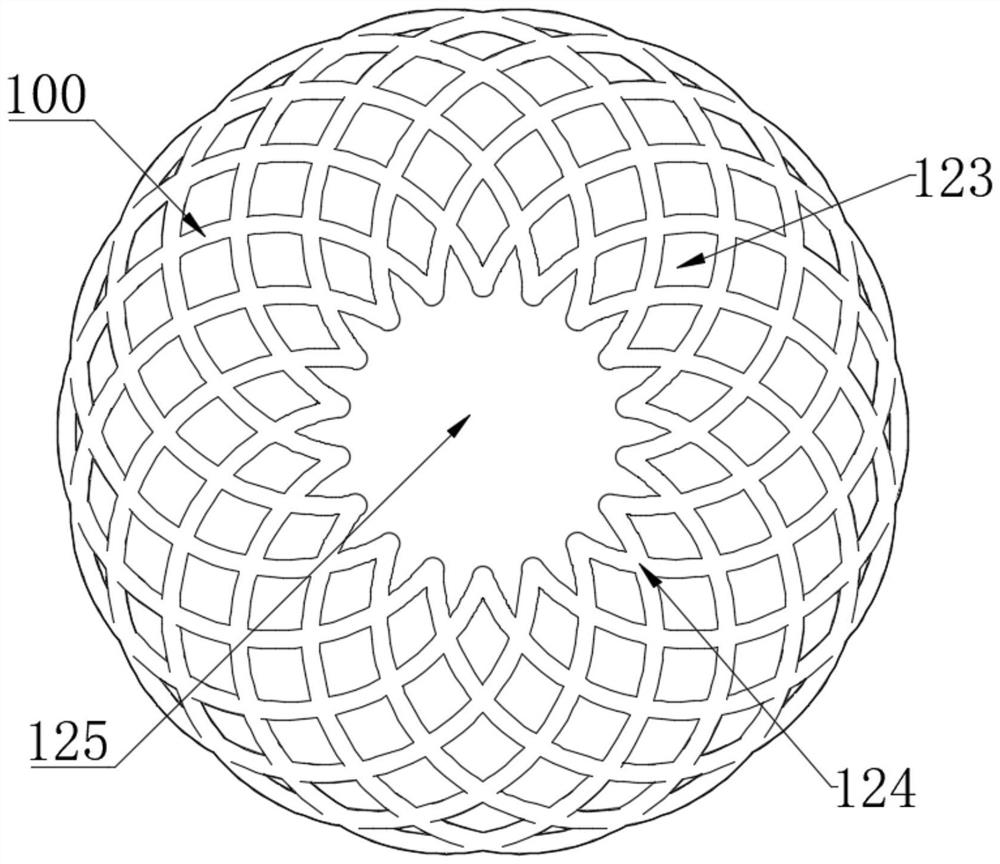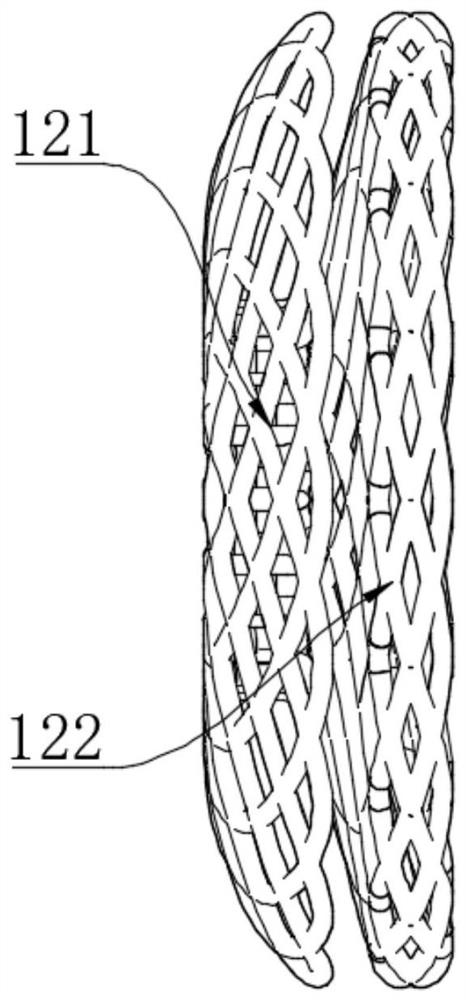Mental and room shunting device
A shunt device and atrium technology, applied in the field of medical devices, can solve the problems of limited donor sources, lack of conditions, and removal of the cause of the disease, and achieve good wall-attachment and anchoring effects, simple overall structure, and good passing performance
- Summary
- Abstract
- Description
- Claims
- Application Information
AI Technical Summary
Problems solved by technology
Method used
Image
Examples
Embodiment 1
[0044] like Figure 1-Figure 4As shown, the embodiment of the present application provides an interatrial shunt device, which includes a conducting portion 110, a first positioning body 121 and a second positioning body 122 respectively disposed on both sides of the conducting portion 110, the conducting portion 110, the first positioning body 122, A positioning body 121 and a second positioning body 122 are integrally woven from a single braided wire 100. Both ends of the braided wire 100 are respectively abutted on the atrial shunt device and the two ends do not protrude out of the atrial shunt device. The wire 100 can be made of, but is not limited to, a plastically expandable or self-expanding material such as nickel-titanium alloy, platinum-iridium alloy, and the wire diameter is between 0.12 and 0.2 mm.
[0045] The conduction part 110 is provided with a circulation cavity 111 for blood circulation. The cross section of the circulation cavity 111 is circular or approxima...
Embodiment 2
[0052] like Figure 5 As shown, in this embodiment, the length of the conducting portion 110 is extended, that is, the conducting portion 110 of different lengths is woven to meet the interatrial septum of different thicknesses, so as to adapt to different widths of the interatrial septum, so that the first positioning body 121, The anchoring force of the second positioning body 122 is more suitable, so as to achieve a better shunt effect;
[0053] Of course, the conducting portion 110 can also be prepared by using a material with stronger elasticity or ductility, so that when dealing with the interatrial septum of different thicknesses, it can be adapted by its own deformation.
Embodiment 3
[0055] like Image 6 As shown, in this embodiment, the second positioning body 122 is a folded double-layer structure, which is formed by the end of the conducting portion 110 that diverges away from the first positioning body 121 and then is folded and folded along the first side close to the conducting portion 110 . The diverging end 1221 is located on the side of the conducting portion 110 away from the first positioning body 121 , and the retracting end 1222 is offset to the side close to the first positioning body 121 and surrounds the outer surface of the conducting portion 110 . At this time, the blood directly passes through the circulation cavity 111 The double-layer structure of the second positioning body 122 can avoid the formation of a small angle between the second positioning body 122 and the atrial septum after implantation, so as to avoid the formation of eddy currents and thrombus in the space of the angle.
PUM
 Login to View More
Login to View More Abstract
Description
Claims
Application Information
 Login to View More
Login to View More - R&D
- Intellectual Property
- Life Sciences
- Materials
- Tech Scout
- Unparalleled Data Quality
- Higher Quality Content
- 60% Fewer Hallucinations
Browse by: Latest US Patents, China's latest patents, Technical Efficacy Thesaurus, Application Domain, Technology Topic, Popular Technical Reports.
© 2025 PatSnap. All rights reserved.Legal|Privacy policy|Modern Slavery Act Transparency Statement|Sitemap|About US| Contact US: help@patsnap.com



